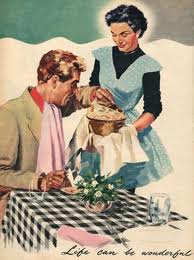Let us be real. Charles Kingsley’s The Water-Babies may have centered on the entertaining of a child’s imagination, but within this literature there are numerous points to be made, prejudices, opinionated societal viewpoints, and many other subliminal messages (among very obvious messages) that the average child would not even begin to understand or even have the competence to know whereof to begin–yet alone the average adult. Many of these messages are signaled to ethnic groups such as blacks or Irish, or “professionals” in the areas of education and medication. Such can be seen when Kingsley satirizes the doctors of his day in response to Professor Ptthmllnsprts’s sudden mental illness, “So all the doctors in the county were called in to make a report on his case; and of course every one of them flatly contradicted the other: else what use is there in being men of science? But at last the majority agreed on a report in the true medical language, one half bad Latin, the other half worse Greek, and the rest what might have been English, if they had only learnt to write it.” Here he shows the clumsiness of “men in science” and how they are always out to disprove one another in argument, using their ridiculous and complicated medical language, in which he further satirizes by presenting the reader with a sophisticated fabrication of long jumbled words to describe the professor’s illness–satirizing onwards by having My (His) Lady react in a shocking manner in response to the sophisticated medical vocabulary, then having Sir John “write to the TIMES to command the Chancellor of the Exchequer for the time being to put a tax on long words.” But it didn’t end there, for Kingsley went on to list all of the “stupid” and endless “remedies” that could have been used by doctors in hopes to cure the Professor’s illness; of course, none of the cures accomplishing the slightest of anything, which is of course one of Kingsley’s arguments. Eventually, the only successful cure became none other than writing–where the Professor begins writing about the moon being made of green cheese and birthing babies.
Although I found many parts of Kingsley’s rant-like rambling (aforementioned above) quite entertaining and comical, it still yet seems to be no commonplace for Children’s Literature. Sure, the images of a nonsensical medical diagnosis with extensive vocabulary, an assortment of absurd remedies for treatment of the professor’s absurd condition, and a moon made of green cheese with millions of crawling babies all does seem quite normal for a children’s story and the entertaining of a child’s imagination; but, the path towards each image is, at times, unclear and too astray for a child to understand–yet alone an adult. The reader comes upon the scene of Tom (as a water-baby) being seen, clear as day, by the skeptical professor and the faithful Ellie, and thus a fairy manipulating the professor’s mind as to not reveal speculation of the water babies’ existence. With these images being quite clear to any reader, Kingsley persists with one of his “moments”, as I call them, where he elaborates on some social characteristic or, as in this case, a satirical allegory. Now, a child reading this will most certainly enjoy the images that are presented thereof; yet still may be so far off topic as to where the reader forgets how things even led up to, persay, a scientific explanation as to why babies could not exist on the moon, ” …It cannot be cold enough there about four o’clock in the morning to condense the babies’ mesenteric apophthegms into their left ventricles; and, therefore, they can never catch the hooping-cough; and if they do not have hooping-cough, they cannot be babies at all; and, therefore, there are no babies in the moon.”
…I rest my case.
Anyhow, another segment of the story that evermore convinces me that The Water-Babies isn’t designated towards an audience befitting children is another one of Kingsley’s “moments” of stray thoughts heading closer and closer into oncoming traffic (as I like to relate it). Here, Kingsley engages the reader upon the idea of the Water-babies. He neither tries to approve or disprove of them; though, he surely tries to legitimize the idea, but still reminds the reader of such superstitions that do arise in any and all fairy tales, “Don’t you know that this is a fairy tale, and all fun and pretence; and that you are not to believe one word of it, even if it is true?” But his argument is that, even though told as a fairy tale, water-babies may still thrive and dwell upon our world; nobody can readily discount the possibility of water-babies existing in all actuality. His reasons for so, I believe, are not all completely fit for being read by children, as they would be lucky to understand even half of his argument–which persists for an incredible ten paragraphs or so. First, he goes on about well-known professors and how, however much they know of nature, cannot disprove something that has not yet been seen or discovered (and he certainly emphasizes the word ‘cannot’, and how vile it is to make such a judgment): “And therefore it is, that there are dozens and hundreds of things in the world which we should certainly have said were contrary to nature, if we did not see them going on under our eyes all day long.”
He continues to go on about how little seeds can grow to big trees, how an elephant at first discovery would go against previous conceptions of “comparative anatomy”, how “flying dragons” were thought to only be myth and legend until skeletal remains of pterodactyls began appearing in dig sites, and how almost all that lives and dwells on land has a similar or almost exact comparison in water or in ocean. Then, he goes on about transformations found in nature such that as the butterfly, and how a human could, in all possibility, submit to the same transformations–such that as a land-baby’s metamorphosis into a water-baby.
All in all, I feel that Kingsley goes into too much depth when writing The Water-Babies. In contrast, the Brothers Grimm’s fairy tales would have only spent at most two lines on the legitimacy of such a creature, as to make quick sense to a child and thus commit more time and detail to the actual story and its plot. Nevertheless, I find The Water-Babies to be a fantastic story and a unique glimpse back into historical perceptions, values, and descriptions of the natural world. Although I wouldn’t recommend this story to be read by “land-babies”, I highly encourage young and old adults alike to read this story–so long as they’re willing to succumb to such scattered thoughts and impressive imaginings as Kingsley’s.






















